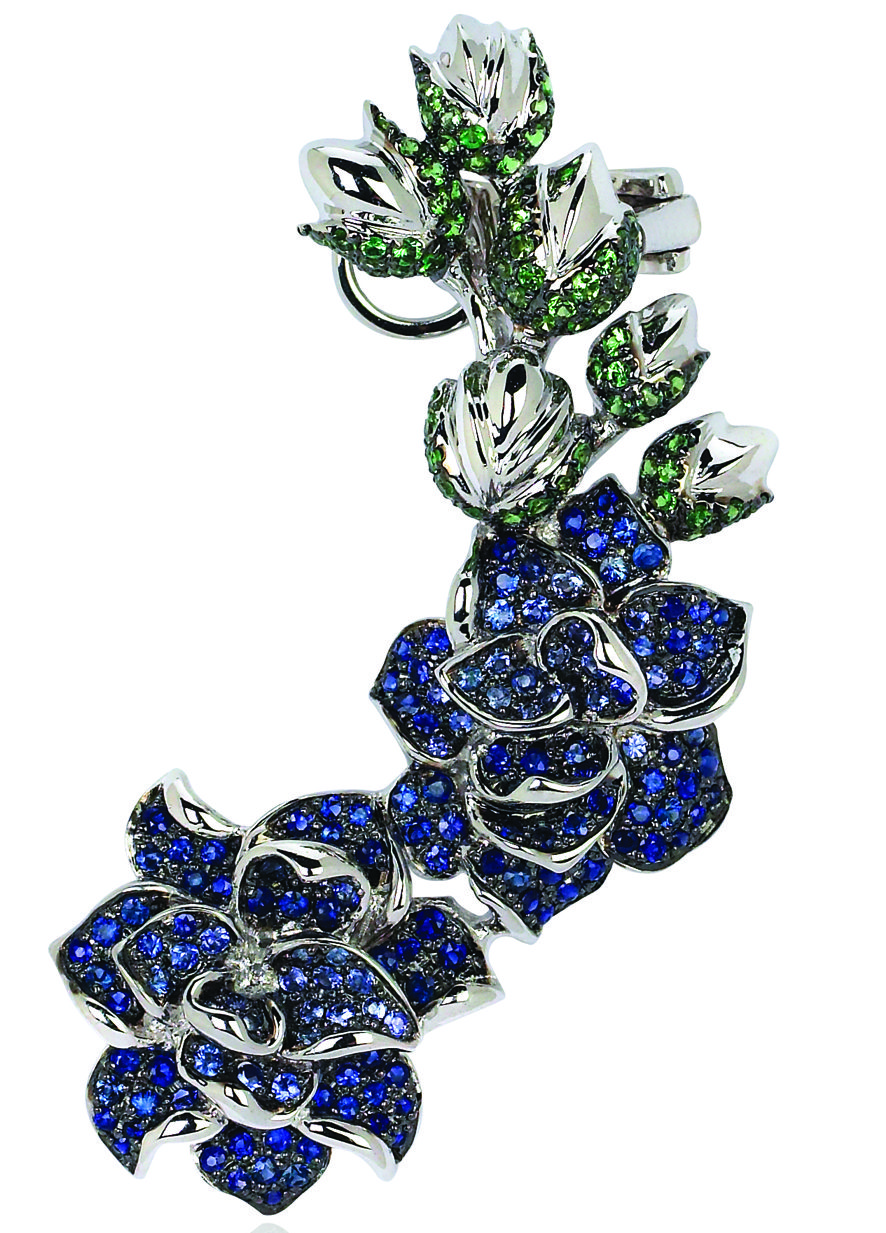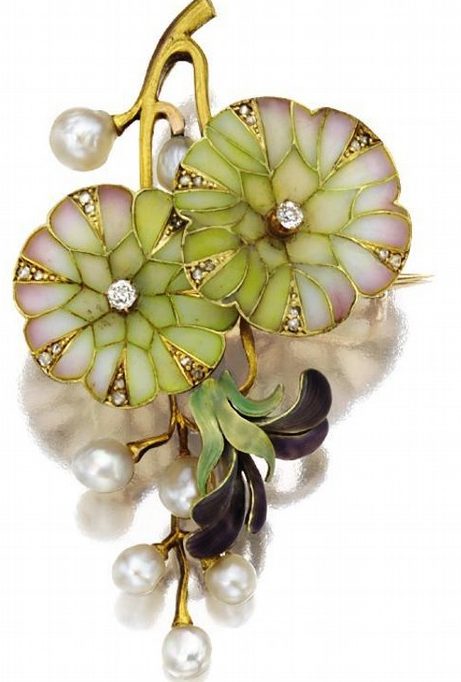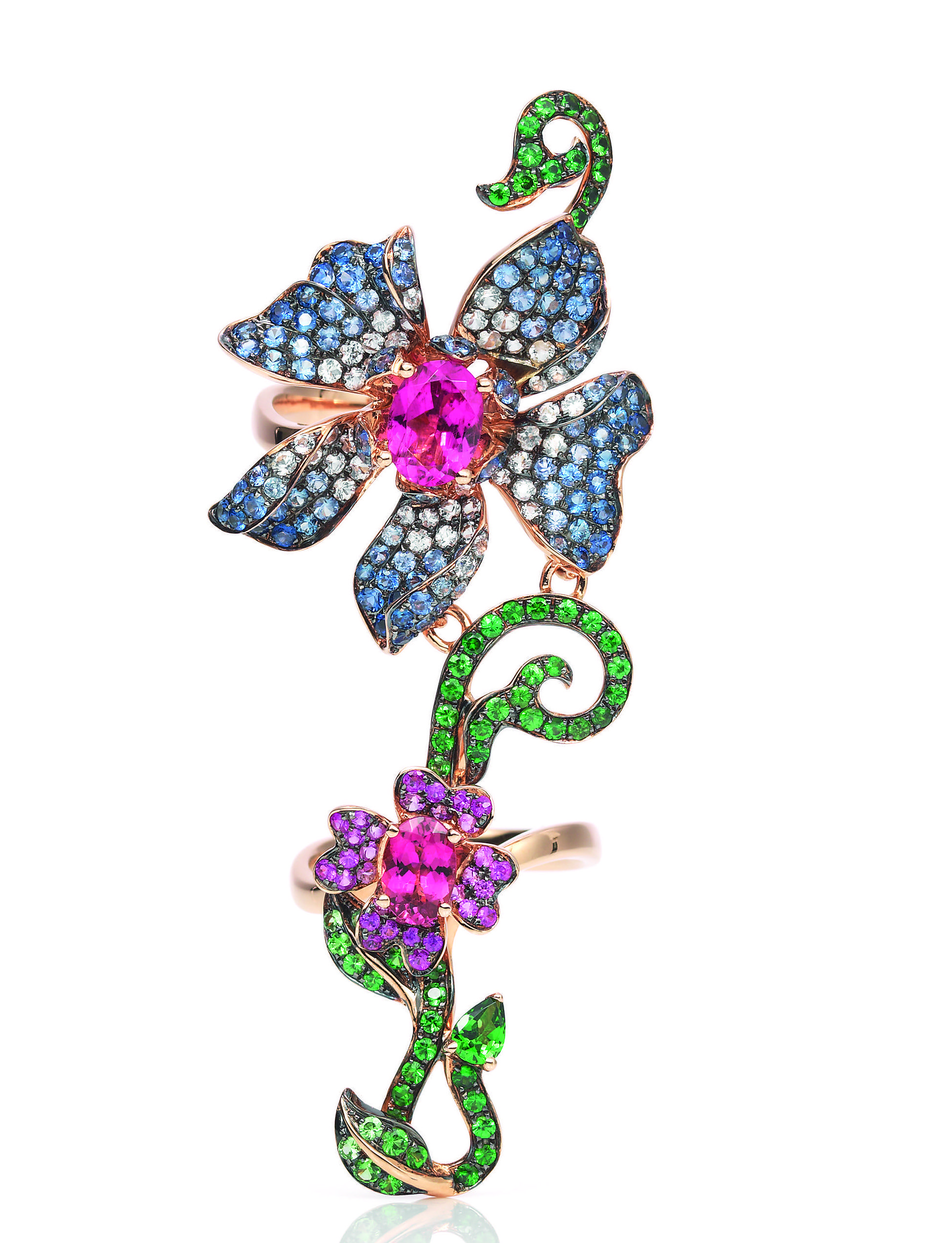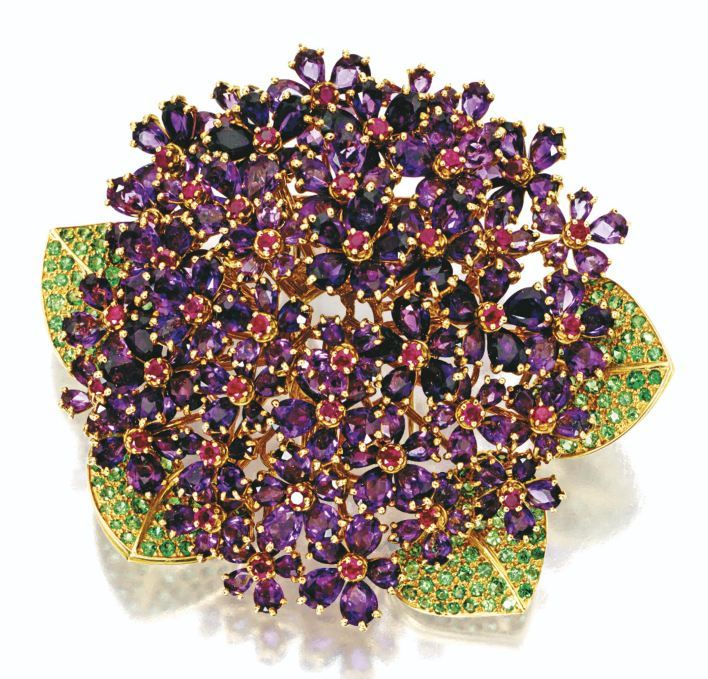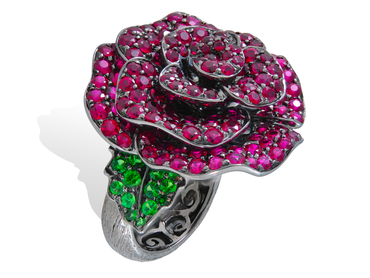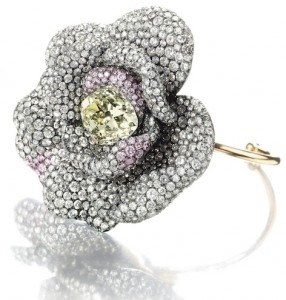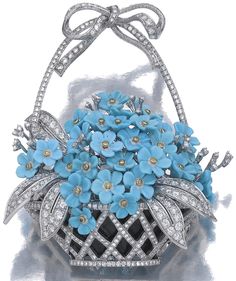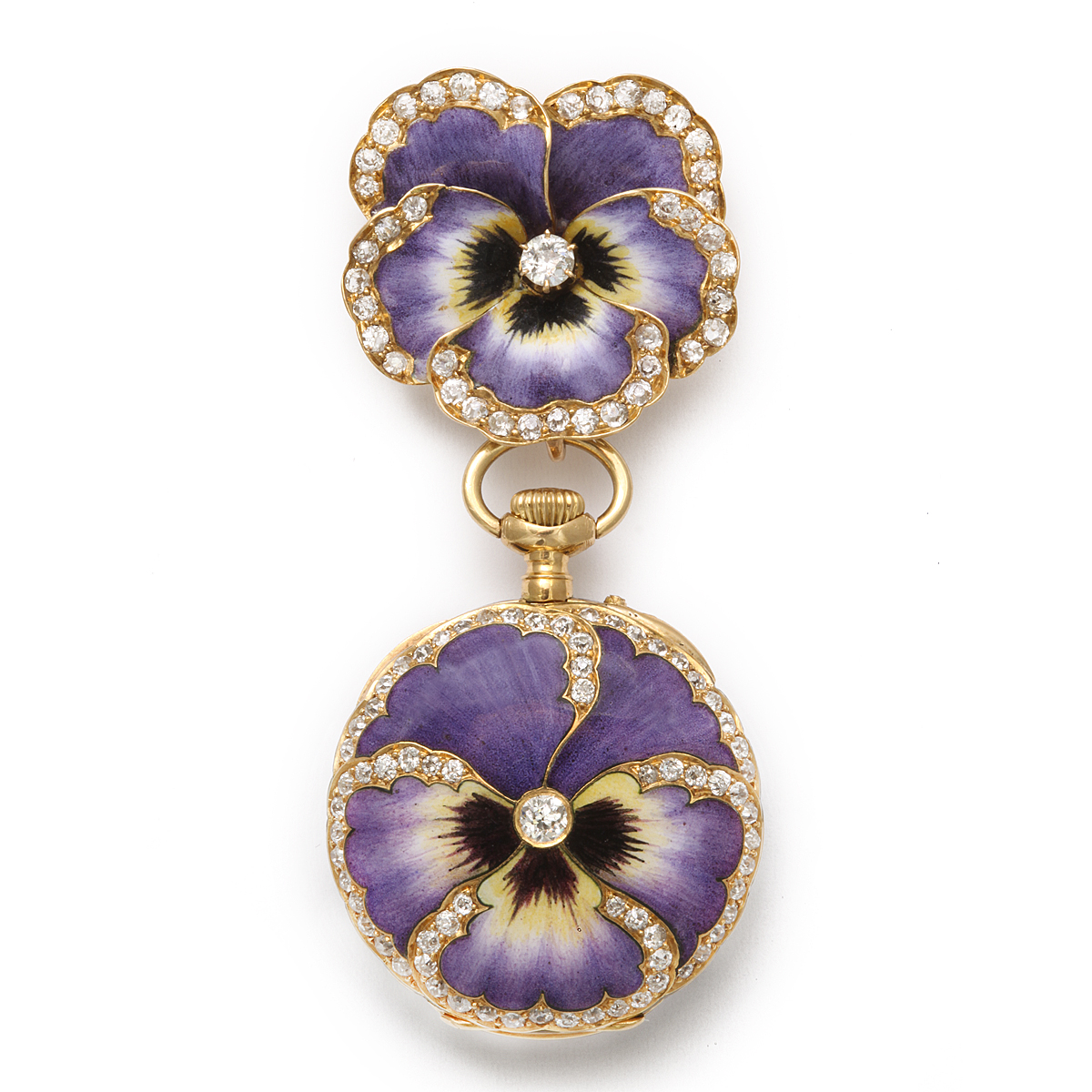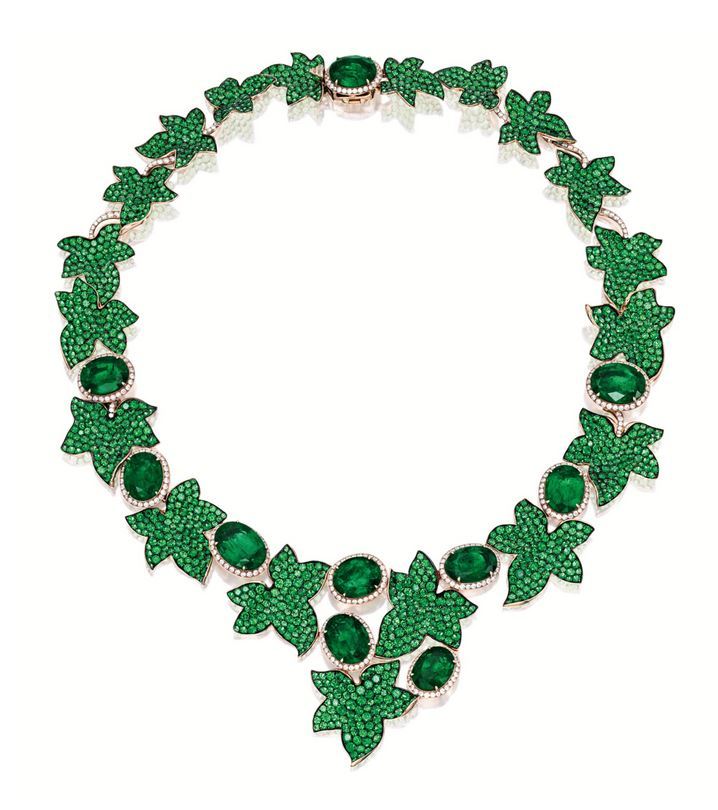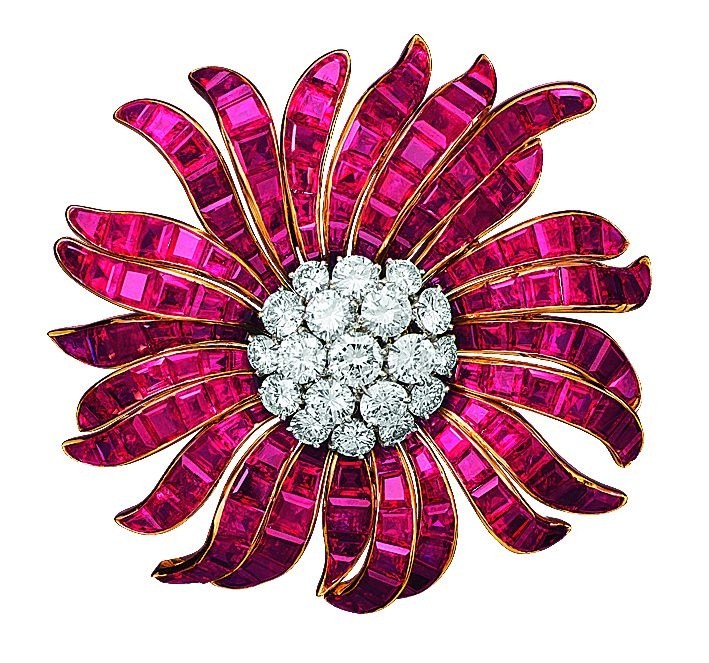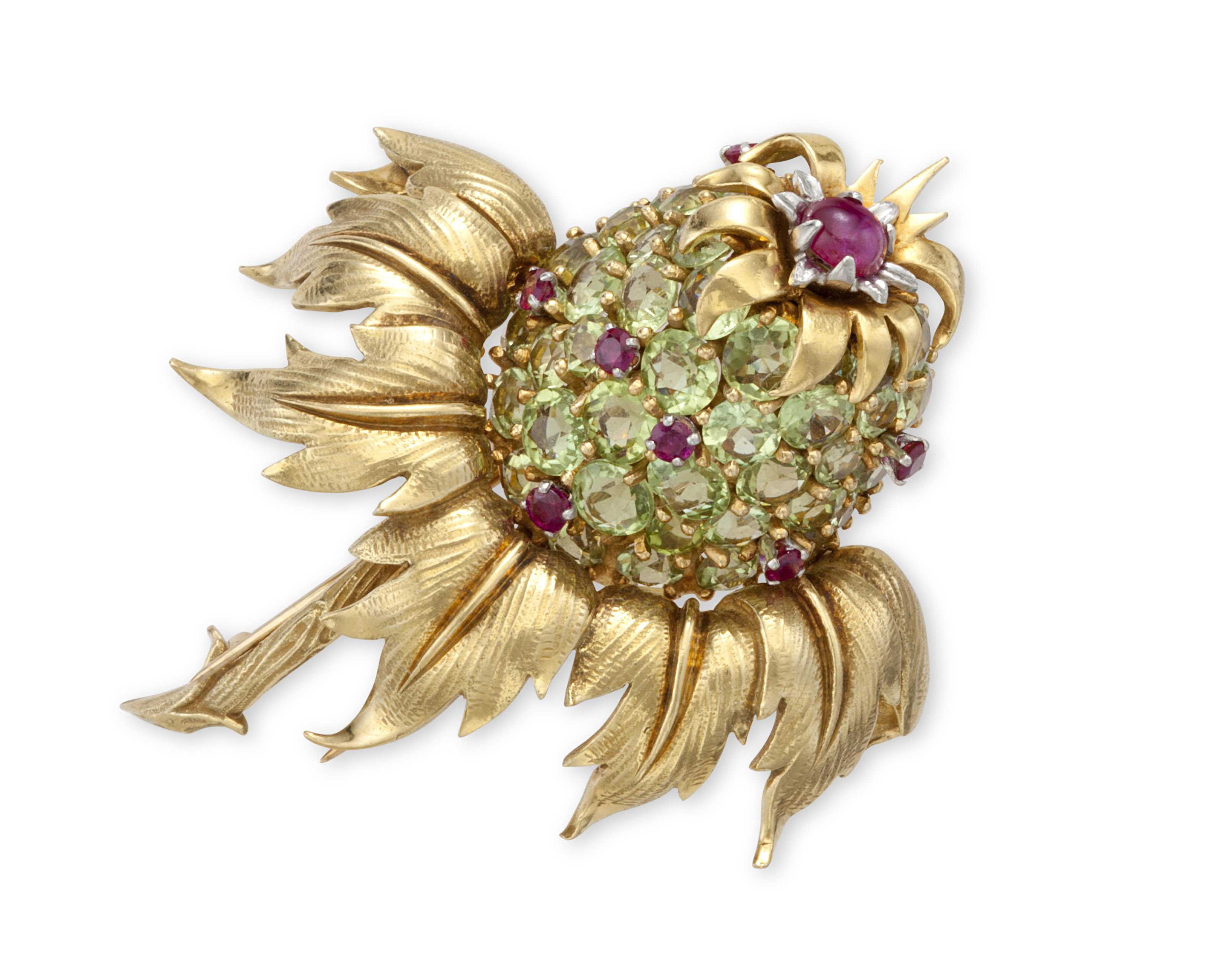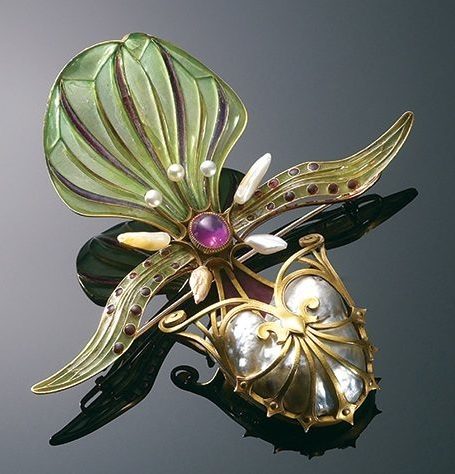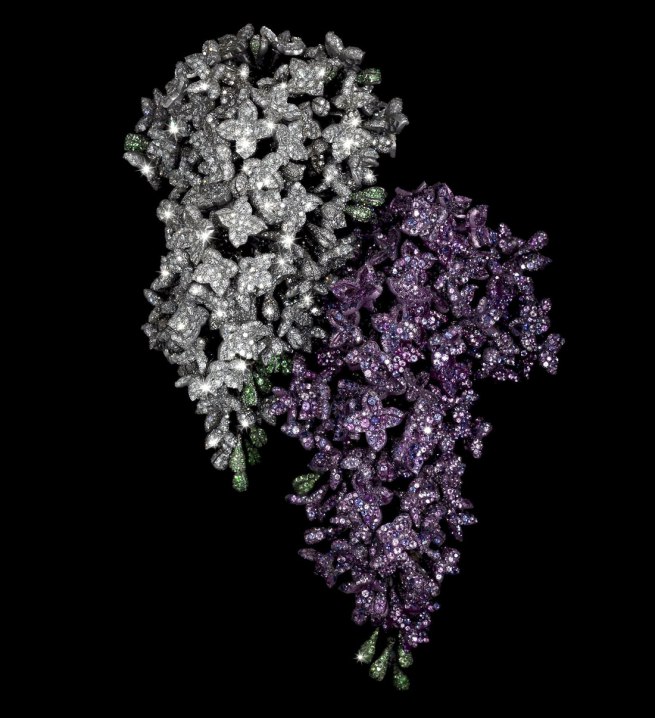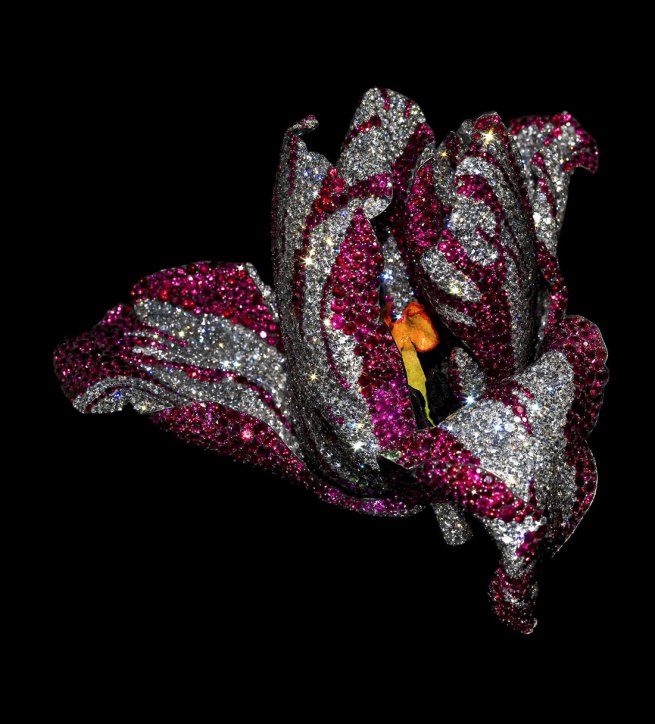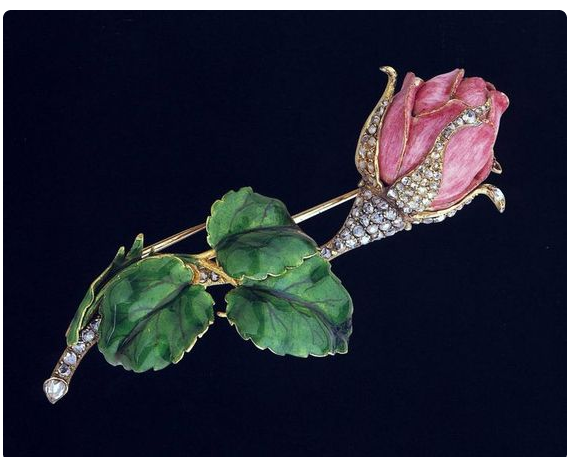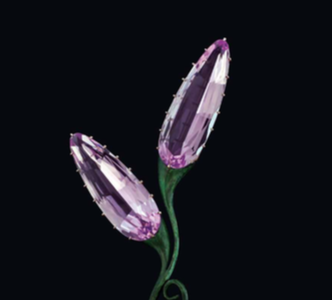Jewelry continues to convey the language of flowers in sentiment and imagination
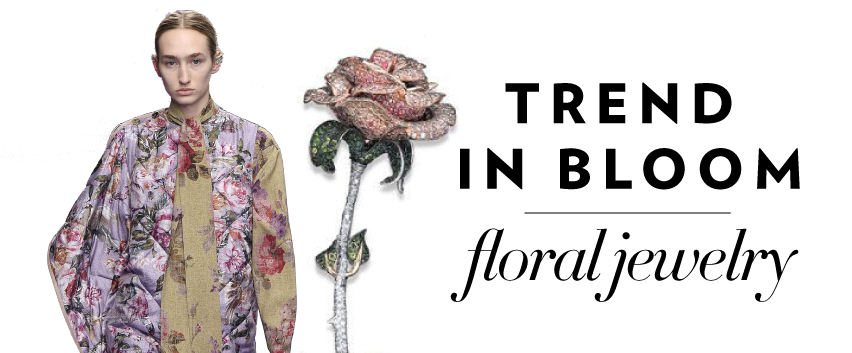
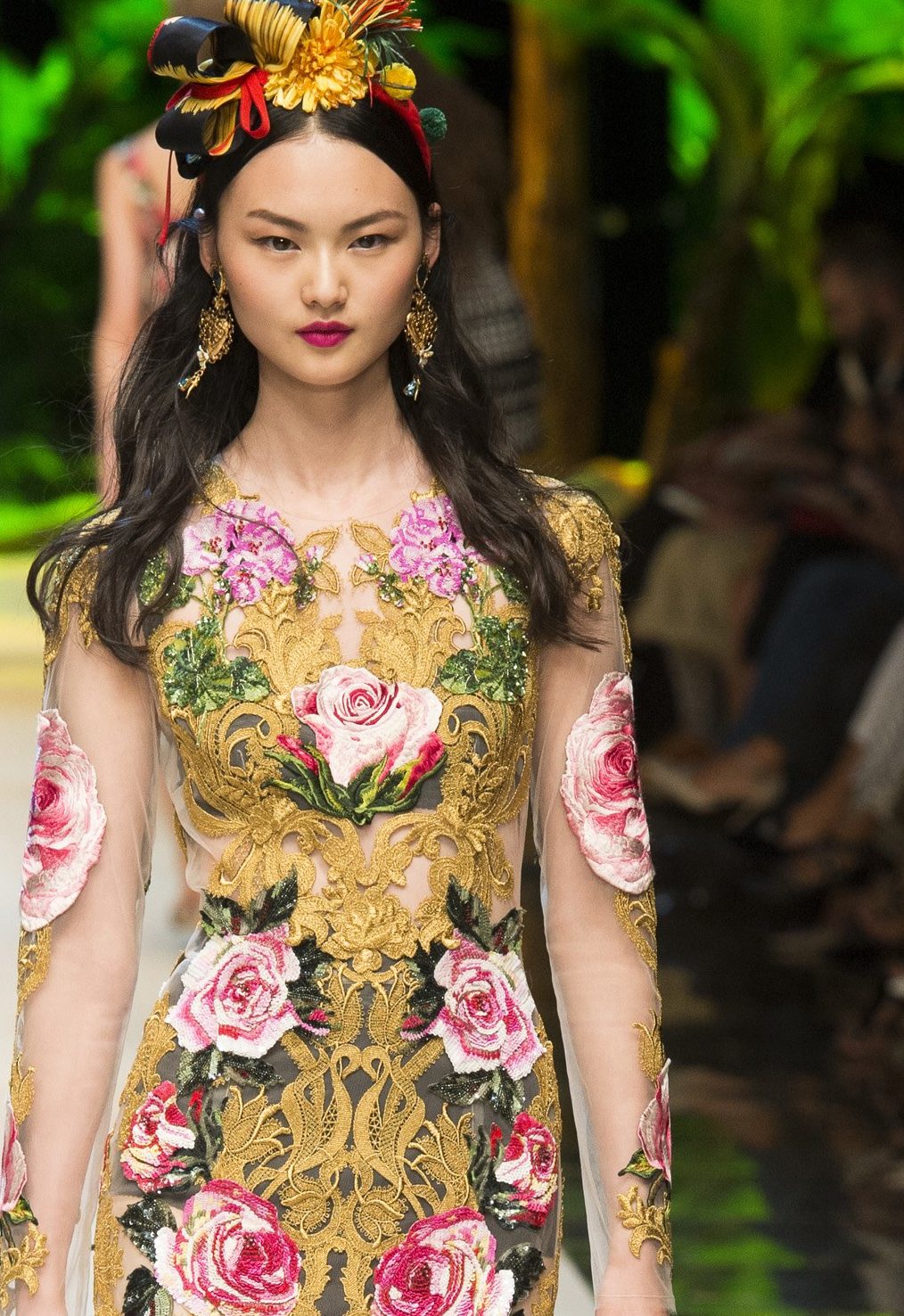
Dolce & Gabbana’s spring 2017 ready-to-wear runway show. Opening home page photo-Mulberry fall/winter 2017/18 runway show and Michele della Valle jeweled rose. photo of rose courtesy of ©Sotheby’s
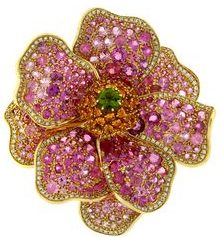
Paula Crevoshay wilde rose pendant in pink and yellow sapphires and peridot
Everything’s coming up florals in ready-to-wear and couture, as seen during the spring/summer 2017 and fall/winter/2018 runway shows. Designers feature styles from garden varieties to exotic wild flowers in silhouettes that range from streamlined to flowing and feminine. But fashion creators aren’t the only ones firmly planted in botanicals — independent jewelry designers and renowned houses are also ‘saying it with flowers’ and there is a diversity of blooms from which to choose.
- Colette’s sapphire rose ring
- Art Nouveau plique a-jour morning glory brooch
- Wendy Yue’s full finger flower ring with blue sapphires, rubellites, tsavorites, pink sapphires, and white sapphires.
Floral motifs in jewelry date back for centuries and were designed in rings, pendants, brooches and earrings. The most fragile petal, the first bud, a full flower head, and the shape of leaves and stems as they curve and grow have been captured and transformed into precious metals, vibrant gemstones and vivid enamel work from the 17th century through the present day.
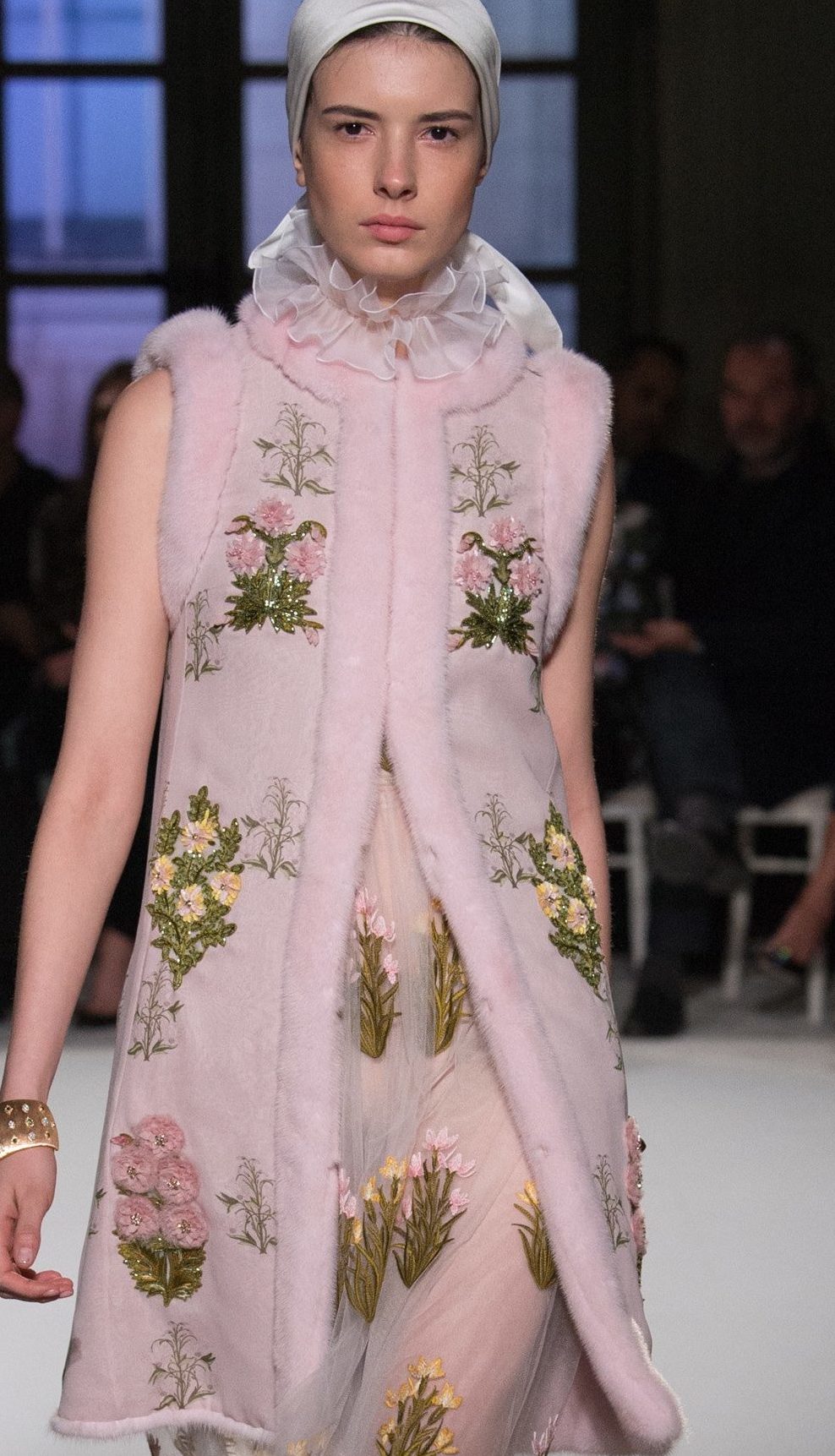
Photo: Giambattista Valli spring 2017 couture runway show
Although Japan and Asian countries cultivated their own floral meanings in earlier times, botanicals as emblems of emotion blossomed during the Romantic era. Poets of the day wrote verse that revolved around single or multiple blooms and floral motifs in jewelry articulated the affections that could not be spoken or shown freely during that period.
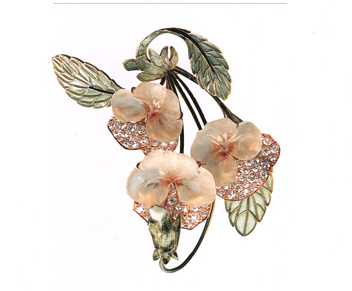
Art Nouveau Lalique pansies in diamonds, rock crystal, natural pearl and plique a jour enameling
In Western culture, various flowers representing different meanings is said to have been inspired by selam – a Turkish custom of communicating through flowers and other objects. However, this tradition decoded messages based on words that rhymed with the objects. After the 1763 Turkish Embassy Letters of Lady Mary Wortley Montagu (wife of the British ambassador to Constantinople) were published describing this secret language, communication through flowers caught on throughout Europe.
In 1819, Louise Cortambert, under the pseudonym Madame Charlotte de la Tour, published what was likely the first dictionary of floral meanings, entitled Le Language des Fleurs. The book was translated into English in 1820 and, by the early Victorian era, sourcebooks and illustrated dictionaries were also published. Enhanced by gemstones with similar symbolism, the language of flowers blossomed into jewelry that would
come to represent various aspects of love and life.
Not only did the designs of each time period recreate the beauty of nature in a three-dimensional art form, it spoke to sentiments that ranged from friendship to the most passionate of love.
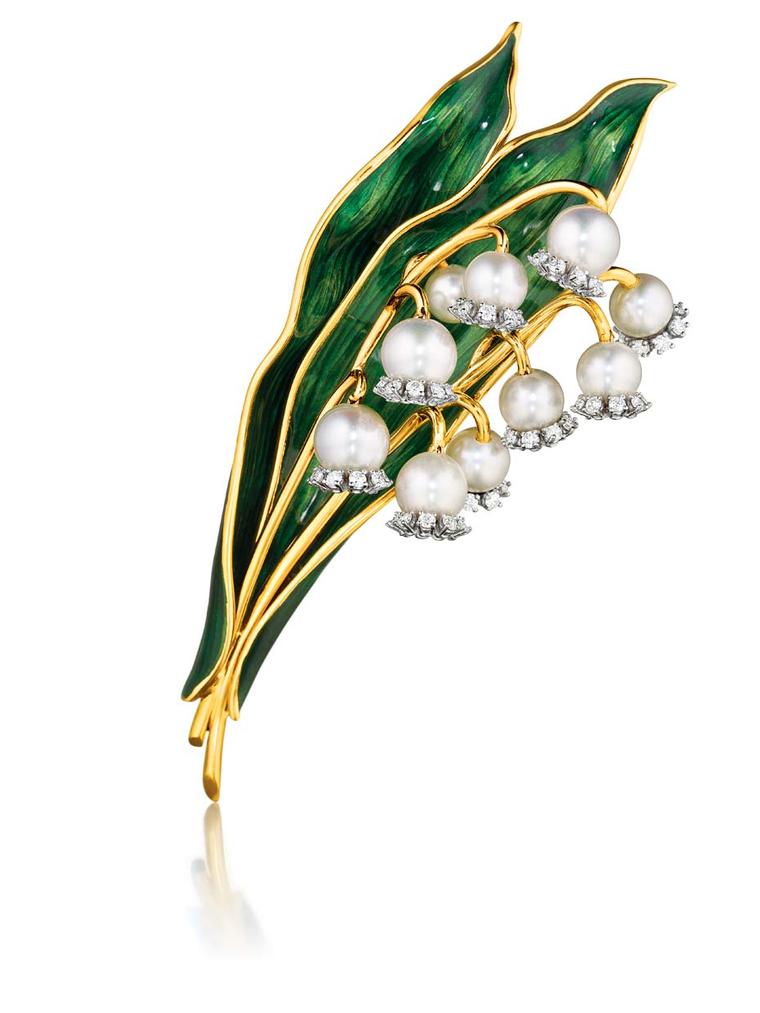
©Verdura, Verdura lily of the valley brooch, circa 1965
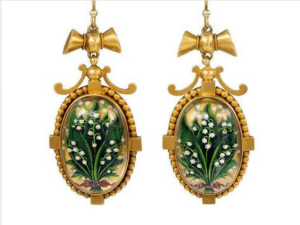
Victorian reverse crystal lily of the valley earrings
A few of the most popular meanings that took hold during the Victorian period include lilies of the valley which symbolize a return to happiness, tulips, which stand for declarations of love, lilacs for new love, roses for various stages of love, violets for faithfulness, ivy for fidelity, camellias for perfect loveliness and lady slipper orchids which had dual meanings of beauty and ‘win me and wear me’. Perhaps the most widely recognized are forget-me-nots for remembrance and pansies (from the French pensee – meaning thoughts – or pensee et moi – think of me. In the 18th and early 19th century, pansy motifs were often part of acrostic jewels –the gemstones of the five petals and the center of the flower would spell out the word ‘Regard’.
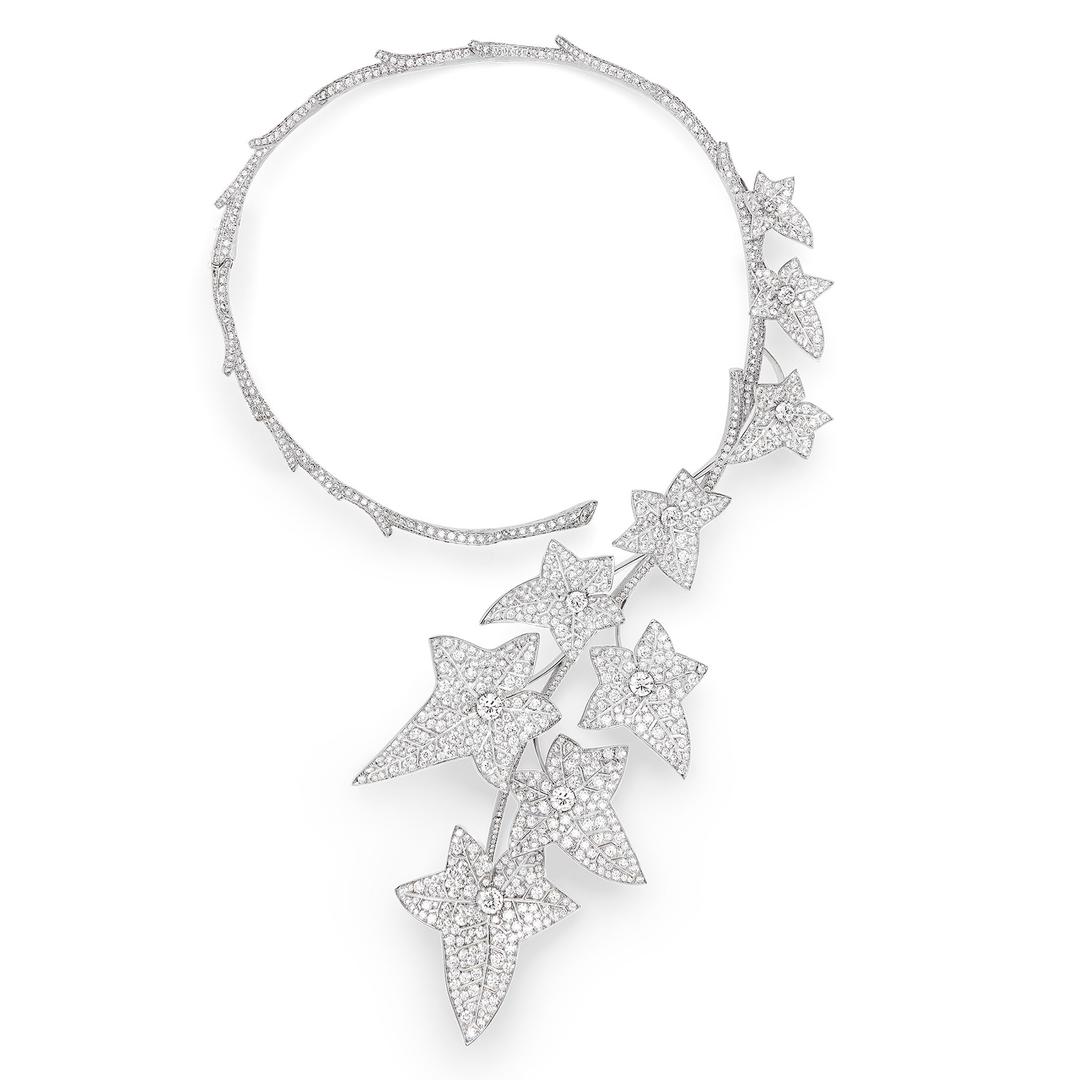
Boucheron’s Lierre de Paris ivy collection diamond necklace, based on the Iconic Question Mark Boucheron style designed in 1871
- Boivin violets brooch, photo courtesy of ©Sotheby’s
- Lydia Courtielle rose ring
- JAR Camellia Bracelet, (1994) in white and pink diamonds. Photo courtesy of©Christies Images
- Michele della Valle forget-me-not brooch with turquoise and diamond flowers. Photo courtesy ©Sotheby’s
- Art Nouveau enamel pansy watch brooch at A La Vieille Russie
- Emerald and Diamond Ivy necklace by Michele della Valle. Photo courtesy @Sotheby’s
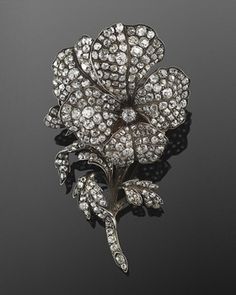
Fred Leighton 19th Century Diamond Pansy Brooch
Almost every renowned jeweler has, at one time or another cultivated floral motifs within their collection. But the ‘giardinetti’ (little gardens) or flower pot and bouquet styles of 18th century brooches and hair ornaments, the 19th century designs of Boucheron, the naturalistic works of the Art Nouveau masters: Lalique, Fouquet, Falize, Vivier and renowned houses such as Chamet, Boivin Van Cleef & Arpels, Cartier and Schlumberger for Tiffany & Co. entranced us through the mid 20th-century.
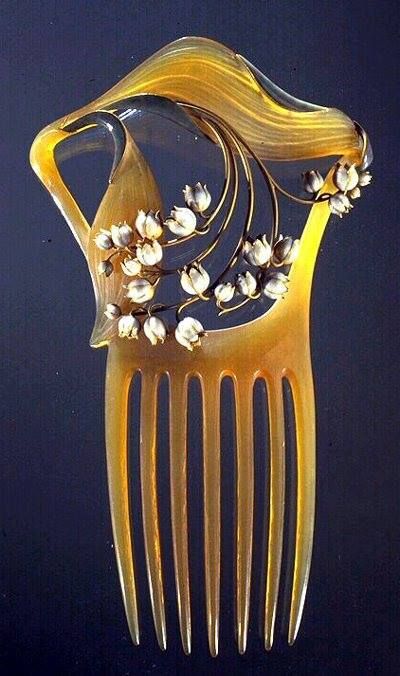
Art Nouveau Rene Lalique hair comb, photo courtesy of Musee des Ar Décoratifs, Paris
Since then, jewelers continue to capture the rare beauty and nuances of flowers, perhaps none so life-like as JAR or Michele della Valle. There are also the designs we recognize as relevant for merging couture fashion with fine jewels such in the case of Victoire de Castellane of Dior High Jewellery and the sculptural works of James de Givenchy for Taffin as well as the fantastical, stylized and enchanting designs of Lydia Courtielle, Michelle Ong, Suzanne Syz, Anna Hu, Paula Crevoshay Wendy Yue and Colette. These represent just a few of the designers who imaginative and evocative rendering of nature in miniature wearable forms capture the hearts and desires of jewelry collectors today.
A delightful cultural tie-in is ‘Jardins’, an exhibit of a variety of art forms focused on the natural world with masterful examples of jewelry by Van Cleef & Arpels and Cartier. It’s being held at the Grand Palais through July 24, 2017
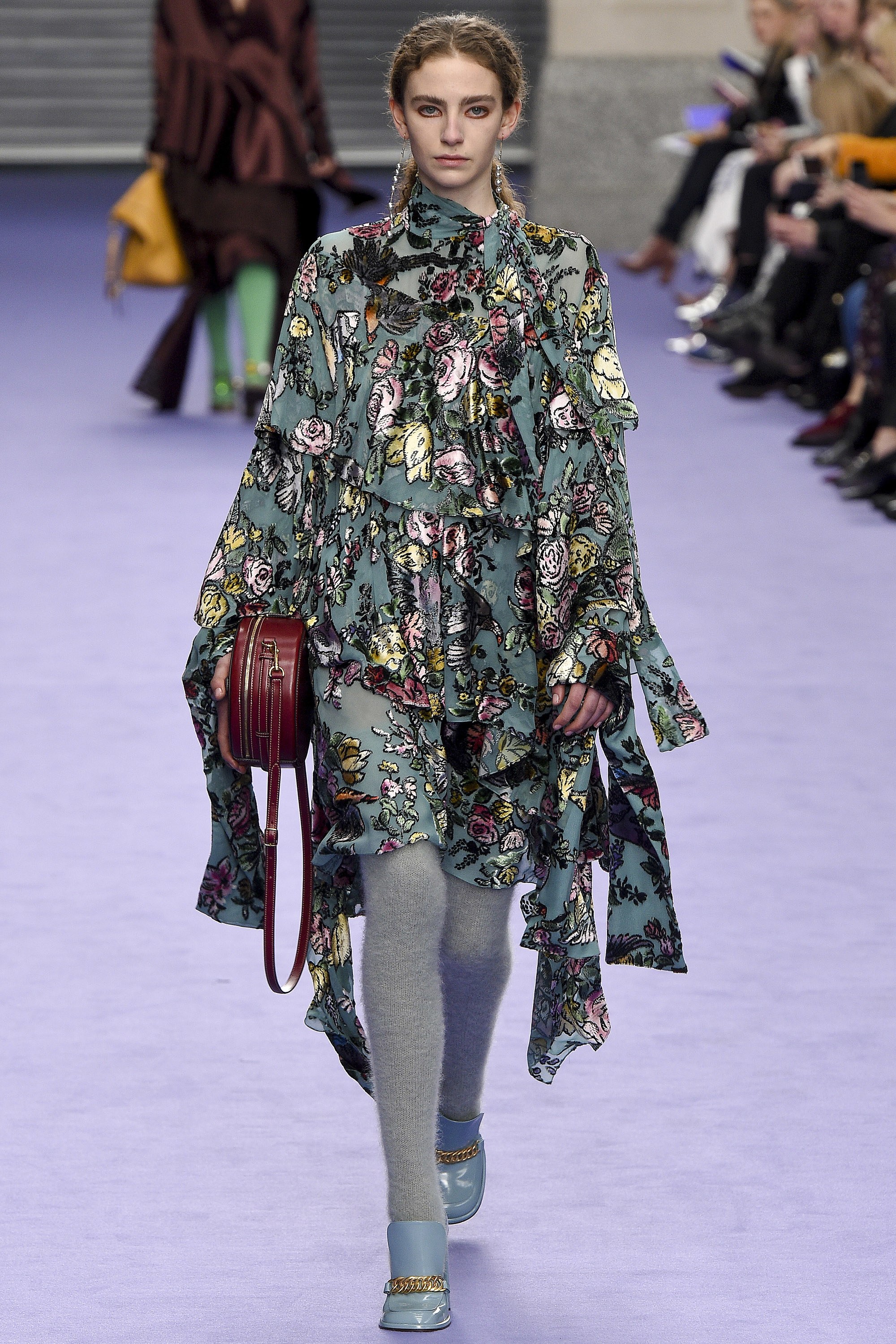
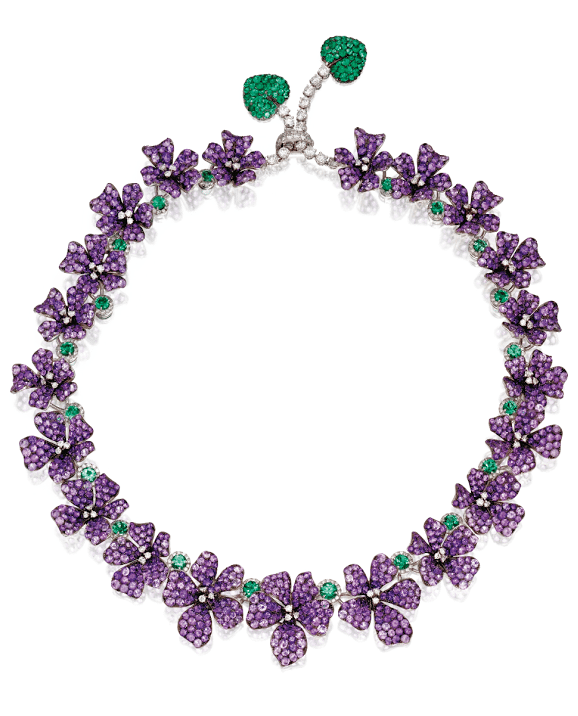
Michele della Valle violets necklace. photo: courtesy ©Sotheby’s
- Van Cleef & Arels mystery set ruby and diamond daisy brooch, circa 1964
- Gold, platinum, ruby an peridot Thistle clip-brooch, Tiffany & Co., Schlumberger. Photo: courtesy ©Doyle NY
- George Fouquet lady slipper orchid brooch, circa 1898. Courtesy of Anderson Collection of Art Nouveau, Sainbsury Centre for Visual Arts, University of East Anglia
- JAR Lilac brooch, photo by Jozsef Tari, courtesy of ©2013 The Metropolitan Museum of Art
- JAR tulip brooch, photo by Jozsef Tari, courtesy of ©2013 The Metropolitan Museum of Art
- George Paulding Farnham for Tiffany and Co. enamel and diamond rose brooch
- James de Givenchy for Taffin. Photo courtesy of ©Taffin by Philippe de Givenchy for Taffin. Rizzoli New York

